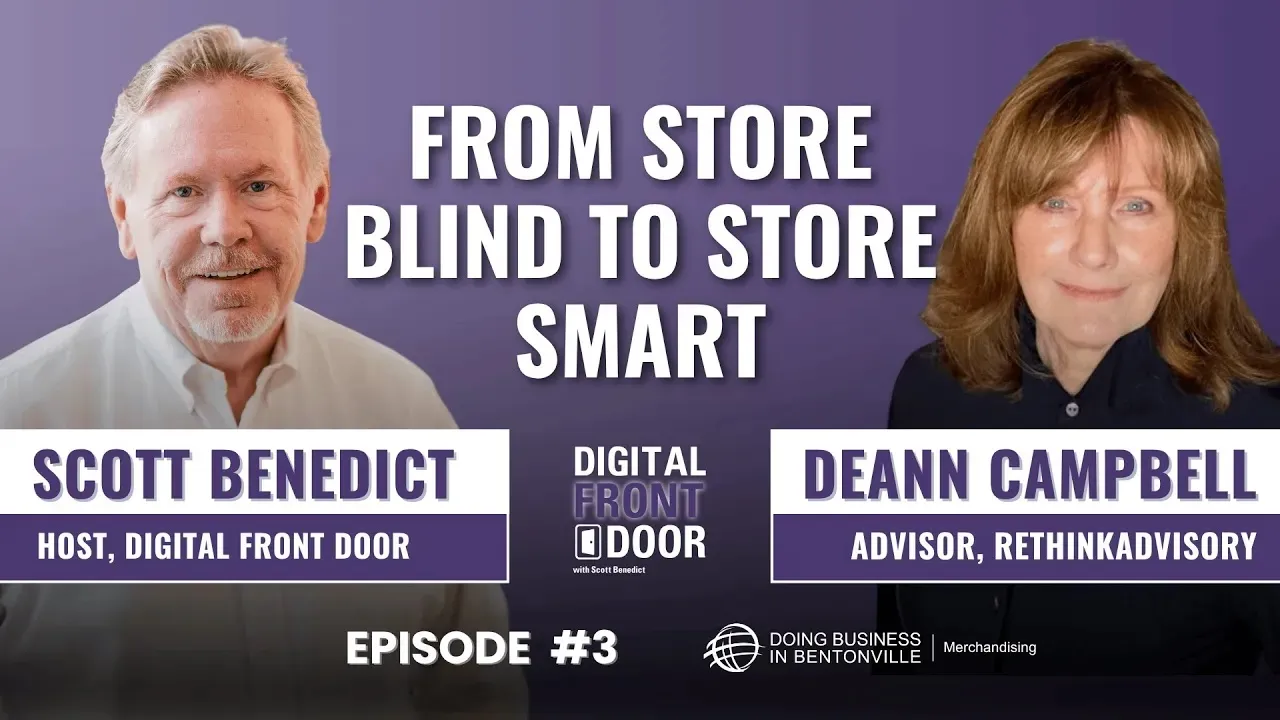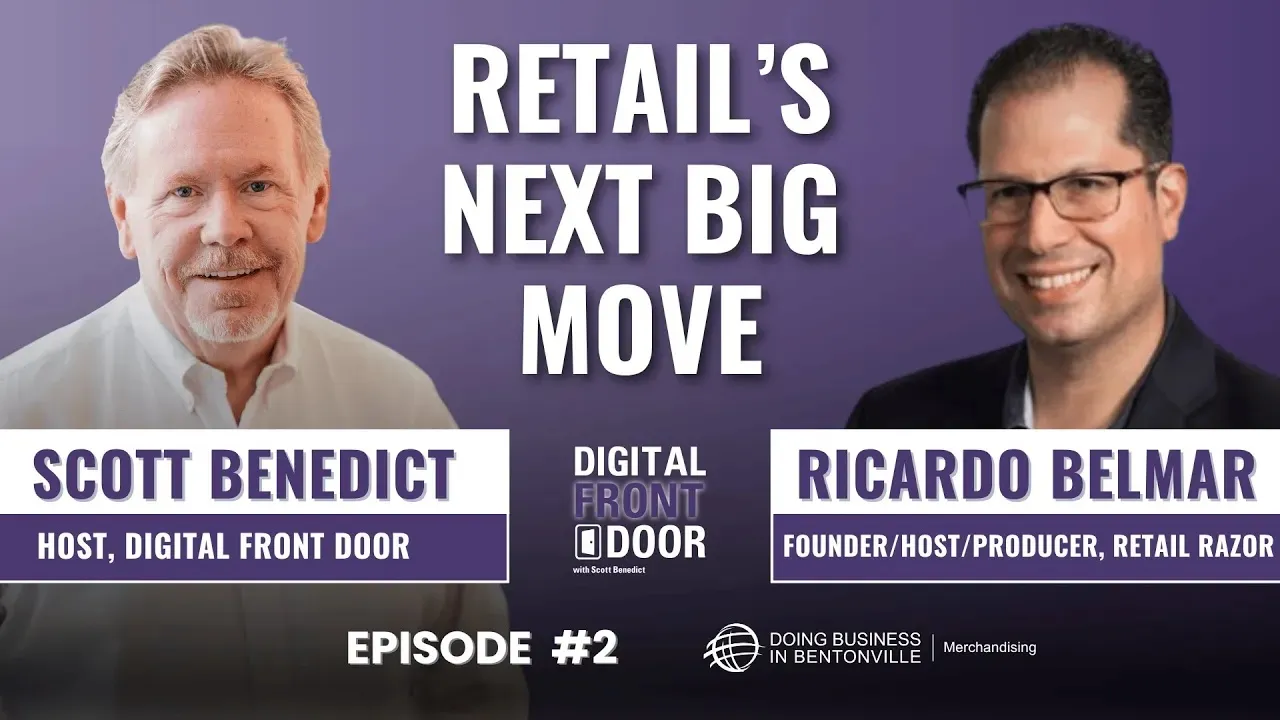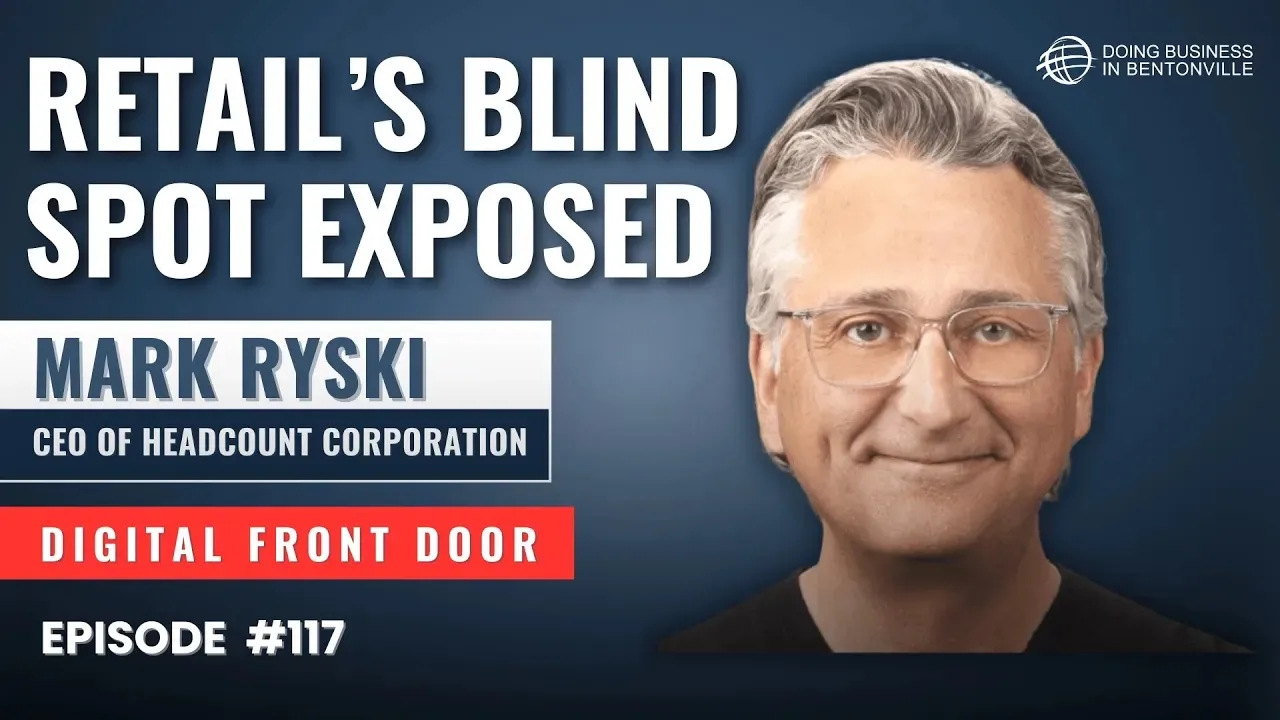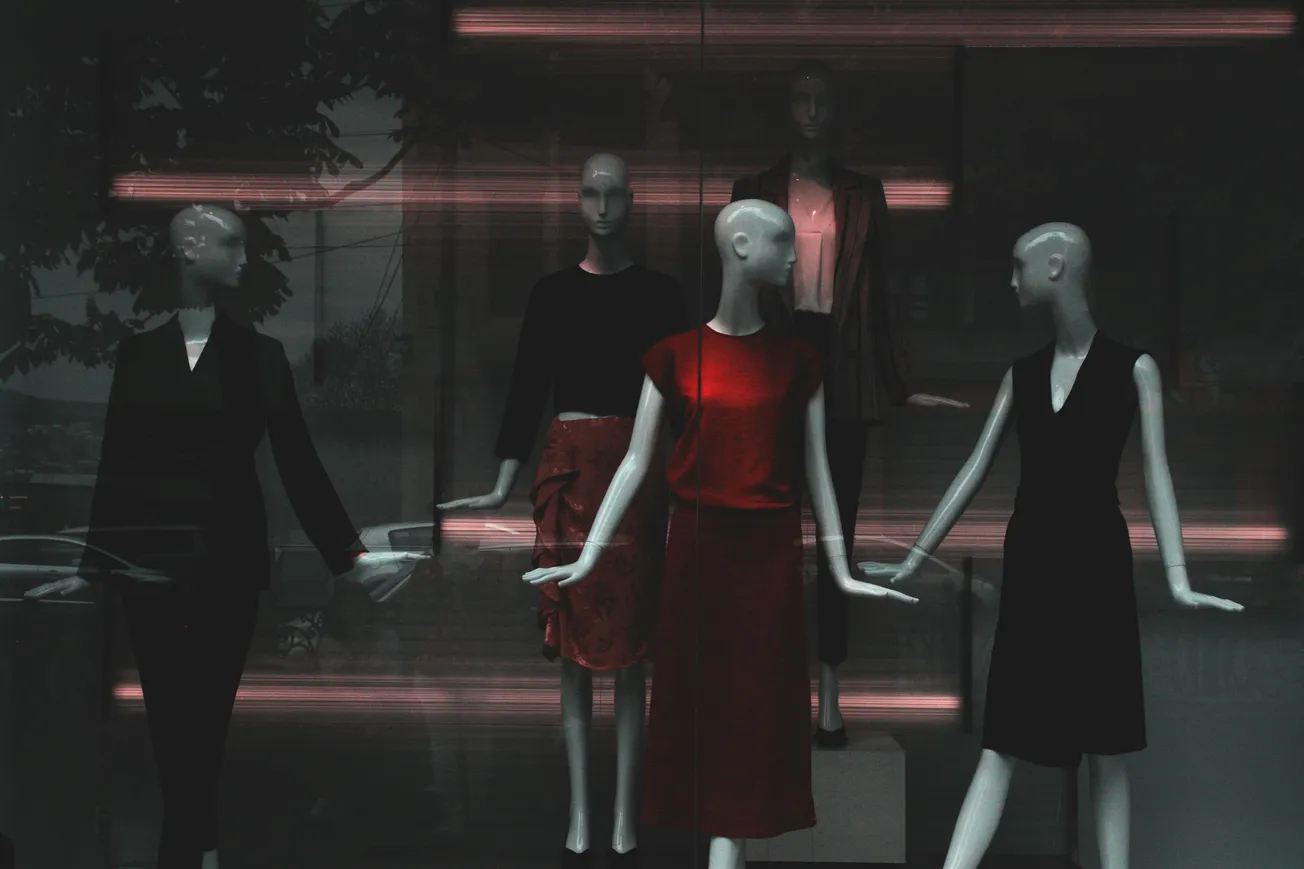The biggest threat to retail growth isn’t a new competitor or a shiny app. It’s the hidden friction inside stores that quietly drains baskets, shortens dwell time, and erodes loyalty without ever showing up on a dashboard. We sit down with retail strategist DeAnn Campbell to unpack “store blindness", the subtle wayfinding glitches, aisle flow breaks, and poor cues that cost millions, and map a practical path to turn physical locations into omnichannel profit engines.
DeAnn shares punchy case studies that reveal how small changes create big wins, like simplifying sweater folds for a 36% lift at Marks and Spencer and adding simple seating to help grandparents and pregnant shoppers stay longer and return less. From there, we dig into the hard truth: inventory accuracy is the foundation for everything modern, from AI-powered recommendations to agentic search and retail media. With real-time stock data, the store becomes the hub and e-commerce the force multiplier, especially when BOPIS zones connect directly to loyalty for higher margin add-ons.
We explore how AI supercharges both customer journeys and associate performance. Think live translation, cultural guidance, and product coaching that turns employees into trusted advisors on the floor. We also get tactical about underused design surfaces, shoppable windows tied to live inventory, geofenced app nudges, in-queue education, and meaningful, dynamic thank-yous at the exit, that deepen engagement and data capture. Finally, we outline the cultural shift leaders need: fresh-eyes audits, a one–three–five-year AI roadmap, modular stores that move like websites, fluid checkout everywhere, and a new metric, total contribution value, that reflects how stores influence revenue beyond the POS.
If you care about unifying channels, lifting margins, and building a store that actually earns its place at the center of your ecosystem, this conversation will give you concrete steps to start today and a vision to aim for tomorrow. Enjoy the episode, share it with your team, and subscribe for more deep dives on the digital-physical retail edge.
More About this Episode
Overcoming Store Blindness: Why the Future of Physical Retail Depends on Seeing What’s Right in Front of You
In a time when artificial intelligence and digital transformation dominate the headlines, it’s easy to overlook the most obvious element of retail success: the store itself. Physical retail still accounts for the majority of transactions, roughly 80% by most estimates, yet retailers continue to treat stores as static cost centers rather than agile, omnichannel profit hubs.
This mindset, according to retail strategist DeAnn Campbell, is not just outdated. It’s costing companies millions of dollars. And most of the time, they don’t even know it.
DeAnn calls this phenomenon store blindness, a systemic failure to recognize the subtle, invisible frictions inside stores that erode both customer experience and profitability. These issues don’t show up on dashboards. They don’t trigger complaints. But they do show up in the numbers: lower dwell times, smaller baskets, abandoned shopping trips, and eroding loyalty.
And as she makes clear, solving this doesn’t require massive capital investment. It requires fresh eyes, cultural change, and a willingness to redefine the role of the physical store in an AI-powered retail world.
What Is Store Blindness?
Store blindness is a form of operational myopia. Retail executives, most based at headquarters, rarely spend enough time in stores to observe the real customer journey. When they do visit, stores are often polished for the occasion. Meanwhile, frontline employees are so deeply immersed in the day-to-day flow that they become numb to inefficiencies. What’s missing is a neutral, trained perspective to spot the frictions no one else can see.
These blind spots aren’t obvious failures. They’re the subtle breakdowns that chip away at the shopping experience. Poor wayfinding, disruptive aisle layouts, or even overly perfect displays that intimidate customers into not touching the merchandise.
And perhaps most dangerously, they’re problems that data won’t reveal.
Case in Point: The Folded Sweaters
One of DeAnn’s favorite examples comes from a project with Marks & Spencer. Sales in the men’s department were underperforming, and conventional wisdom pointed toward product assortment or visual merchandising as the likely culprits.
The real issue? Sweaters were folded too perfectly.
Customers didn’t want to mess up the display, so they didn’t unfold items to inspect them. That hesitation directly impacted conversion. After adjusting the folding method to something more approachable, sales increased by 36%, at zero additional cost.
No dashboard would have flagged this. But it mattered immensely.
Small Changes, Big Impacts
Another example from Babies “R” Us highlights how a simple addition, seating, boosted not only sales but also customer satisfaction. A significant percentage of shoppers were pregnant women or grandparents. Walking through a large store was exhausting. By adding seating areas, the retailer made it easier for shoppers to linger, complete registries in-store (which reduced returns), and make more purchases.
Yet today, many major retailers still overlook this simple design element. The absence of in-store seating is a blind spot, one that directly impacts basket size, return rates, and even brand loyalty.
The Disconnect Between Digital and Physical
Despite the push toward omnichannel retail, most organizations still treat physical and digital channels as separate silos, especially when it comes to investment and measurement. This is a mistake.
According to Campbell, the physical store should be viewed as the hub of the retail ecosystem, not the afterthought. E-commerce should function as a force multiplier, driving demand and engagement that physical stores are best positioned to fulfill.
Inventory accuracy is a huge barrier to that goal. AI-powered applications, whether for search, recommendation engines, or real-time customer support, are only as good as the inventory data they rely on. If your store shows an item in stock that’s not really there, you’ve broken the promise to the customer.
Until that foundational disconnect is solved, omnichannel retailing can’t function effectively.
Designing for Omnichannel: Beyond Fixtures and Layout
To enable true omnichannel engagement, stores must be more than places of transaction. They must become AI-ready, data-connected, and human-powered experience hubs.
Start with BOPIS (Buy Online, Pick Up In Store) zones. Most retailers have dabbled in BOPIS, but few have fully optimized it. Campbell recommends tightly integrating BOPIS into loyalty programs and digital journeys. Not only does this drive incremental in-store purchases, 65% of BOPIS customers buy something else while picking up, but it also creates a valuable data loop between digital and physical touchpoints.
From a design perspective, most retailers underutilize key real estate:
- Storefront windows: Why not make them shoppable with QR codes and real-time inventory visibility?
- Checkout areas: These should be prime locations for loyalty conversion, upsells, and meaningful “thank you” messaging, not just impulse buys.
- Fitting rooms: Still often ignored, despite being one of the highest-conversion zones in apparel retail.
Campbell envisions a world where stores are as flexible and personalized as websites, with grid-based infrastructure for movable lighting, sensors, and fixtures that can adapt to seasonal or promotional needs in real time.
The Role of AI in the Store
AI isn’t about replacing people. It’s about enhancing human interaction, both for customers and employees. In the hands of store associates, AI becomes a powerful tool for customer engagement, real-time support, and even language translation.
Imagine a new associate temporarily covering the fishing department. With AI-powered support, they could pull up local fishing spots, ask the customer where they’ve fished before, and create a conversation, even if they have no expertise in the category. It’s not about selling. It’s about storytelling.
On the employee side, AI could support dynamic scheduling to help workers pick up extra hours toward personal goals. It could simplify complex processes, guide onboarding, and support retention by enhancing the quality of life.
In short, AI can humanize the store experience when deployed thoughtfully.
Cultural Change: The Hidden Key
True transformation isn’t just technological, it’s cultural. To move forward, retail leaders must redefine how they think about stores and store associates.
Campbell offers two core steps:
- Start with fresh eyes: Audit your stores for hidden inefficiencies and experience drains. Fixing these builds momentum for broader change.
- Build a 1–3–5 year roadmap: Don’t aim for perfection. Start with inventory accuracy, then invest in omnichannel experiences like BOPIS and loyalty integration. Use the store as a live lab for testing and learning.
Just as importantly, retailers need to move away from measuring stores solely by sales per square foot. Instead, they should consider total contribution value: how the store drives revenue across channels, supports customer acquisition, powers fulfillment, and builds brand equity.
The Store of the Future: A Living, Adaptive Ecosystem
Looking ahead 3 to 5 years, Campbell paints a compelling picture of what the store of the future could look like:
- Modular design: Fixtures, displays, lighting, and sensors that can shift in real time to accommodate new layouts or promotions.
- Personalized environments: AI-controlled scent, music, lighting, and temperature that adjust by time of day, local events, or shopper preferences.
- Seamless checkout: Whether assisted by an associate or handled independently via trusted mobile apps, checkout becomes fluid and contextual.
- Digitally integrated storytelling: Signage that thanks you by name, offers personalized recommendations, or invites you to return with custom incentives.
- Retail media networks: In-store displays connected to ad platforms and first-party data, enabling monetization while enhancing the shopper experience.
- AI-augmented employees: Associates equipped with real-time data, translation tools, and upsell suggestions tailored to each customer.
In this vision, stores are not relics of the past. They’re dynamic platforms for engagement, fulfillment, and growth.
Final Thoughts: See What Others Miss
Retail isn’t broken. It’s blind.
The opportunity isn’t just to add more technology. It’s to remove the friction that’s already costing you sales. The store of the future isn’t about robots or fancy screens. It’s about delivering a seamless, emotionally resonant experience that works across channels—and it starts by seeing what’s right in front of you.
As DeAnn Campbell puts it, “AI forces us to return to good fundamentals. You can’t fake it. You have to offer a real, valuable, connected experience, because customers will feel the difference, even if they can’t explain why.”
The retailers who win the future will be the ones who open their eyes today.










